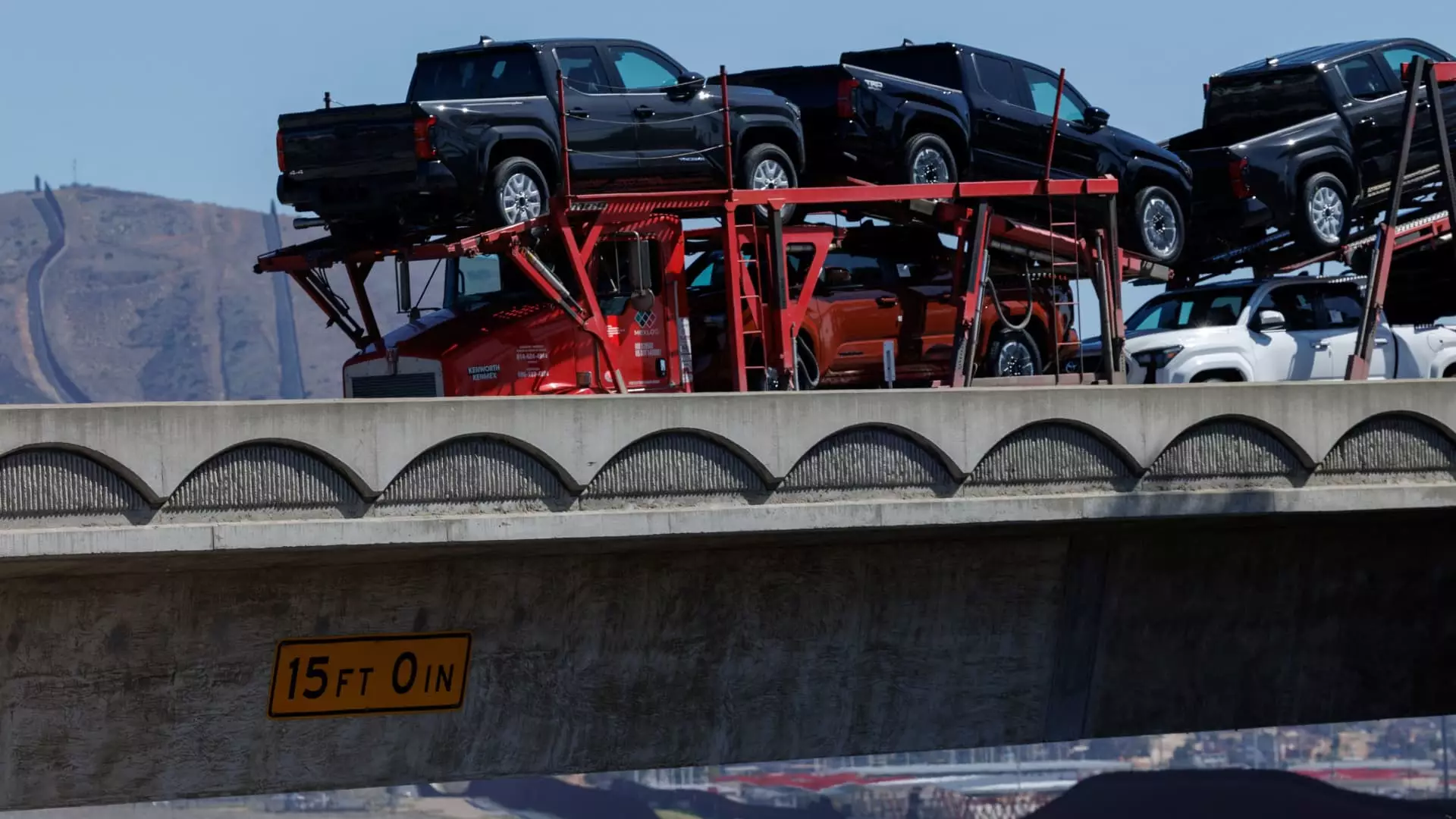The announcement by former President Donald Trump regarding the imposition of a staggering 25% tariff on imported vehicles and automotive parts has sent shockwaves through the auto industry. While it’s tempting to view this as a bold stride towards reviving American manufacturing, one must consider the long-term repercussions of such a sweeping policy. In a world where economic interdependence is the norm, the ramifications of this decision will be multifaceted and potentially profound.
The Automotive Complex: A House of Cards?
At the heart of this new tariff regime lies a complex ecosystem containing over 20,000 components necessary for the production of a single vehicle. Many of these parts cross the U.S.-Mexico border multiple times during the manufacturing process. The significant exposure to international suppliers raises questions regarding the feasibility of the new tariffs. Goldman Sachs has projected that these tariffs could lead to price hikes of $3,000 to $15,000 per vehicle, potentially straining the budgets of American consumers. This price escalation may well turn the tide of the market dynamics, pushing consumers towards foreign alternatives despite a desire to support domestic industry.
Theoretically, higher tariffs are designed to protect American jobs and bolster local manufacturing in Detroit and beyond. However, the reality tends to be far more intricate. The manufactured landscape of the automotive industry in North America is no longer a monolith; it’s an intricate web of interdependencies among nations, with parts sourced globally. By imposing tariffs indiscriminately, Trump’s administration overlooks how the very fabric of modern manufacturing relies upon these global supply chains. The naive understanding of “Made in America” must evolve to reflect this complexity.
The Dichotomy of Protectionism and Price Inflation
Among the most chilling aspects of this policy is the dichotomy it highlights between protectionism and consumer affordability. The United Auto Workers union, led by Shawn Fain, celebrated the announcement as a boon for blue-collar workers and their communities. While their enthusiasm is warranted, it’s problematic to champion one group’s prosperity while disregarding the financial implications for millions of car-buying Americans. The question remains: will increased production translate to valuable jobs, or will higher costs simply force consumers to forgo new vehicles altogether?
Moreover, it is vital to recognize that U.S. automakers—namely General Motors, Ford, and Stellantis—do not operate in a vacuum. The market dynamics are vastly complex, and global competitors are constantly adapting. Many consumers may seek alternatives elsewhere, effectively nullifying the intended protective impacts of the tariffs. The ambitious dream of revitalizing American manufacturing through tariffs may inadvertently lead to job losses, as automakers struggle with elevated costs and reduced demand.
The Reaction: Allies and Dissenters
Responses to these tariffs have been mixed. While industry representatives like former Missouri Gov. Matt Blunt express cautious support for Trump’s vision, there’s a palpable anxiety about how these policies will impact the competitiveness of the U.S. automotive sector as a whole. Cross-border trade agreements that have allowed for seamless operations could now face enormous strain, leading to further complications and potential retaliation from trade partners.
The unpredictability of these regulations places automakers in a precarious position. A tariff-free environment based on the United States-Mexico-Canada Agreement (USMCA) currently offers a semblance of balance; however, this may be thrown into disarray as new bureaucracies emerge. The White House’s statement suggests a willingness to review these tariffs, yet the exact enforcement remains murky, further complicating planning for companies that are already navigating a labyrinth of tariffs, production costs, and consumer demand.
Future Implications: Will the Risks Pay Off?
As the economic fabric of interdependence shows signs of strain, the risks associated with Trump’s auto tariffs may outweigh the perceived benefits. The ambition to foster local jobs and manufacturing must be tempered by the reality of a globalized economy. A deliberate and thoughtful approach, rather than a blunt instrument of tariffs, is essential to ensure that the dream of American manufacturing does not become a nightmare for American consumers. The hope is that an informed public and vigilant policymakers will guide the automotive industry’s evolution in a way that respects both the workforce and the complexities of global integration.

